Do you know how many whiskers your cat has and where they’re located?
Why do cats need these thick long hairs in the first place and how exactly do they work?
Your cat’s whiskers are little miracles of nature. These bristly hairs, also called vibrissae, sinus hairs, sensory hairs or tactile hairs, are a highly specialised form of hair. They’re not actually part of your cat’s coat of fur; instead, they’re part of a sensory organ your cat uses to feel, sense and touch. Without whiskers, cats wouldn’t be able to do what they’re best at, namely lurking, hunting and communicating. “Wait a second”, you say, “why communicating?”Because cats actually use these sturdy bristles to communicate. And sometimes we can even tell what kind of mood the cat is in by looking at their whiskers!
But only if you know how…
Why do cats have whiskers?
Why do cats need whiskers in the first place? Cats use these “feelers” to orientate themselves. With the help of these bristly hairs, they’re able to scan their surroundings and get a very precise picture of what’s happening around them. It’s more than just a visual scan, too: cats use their whiskers to actually feel everything around them, even when it’s pitch black! With the help of these special hairs, they scan their entire environment; in a way, whiskers provide cats with a navigation system that tells them where their target is and what it’s made of. Whiskers also protect cats’ eyes and enhance their sense of smell.
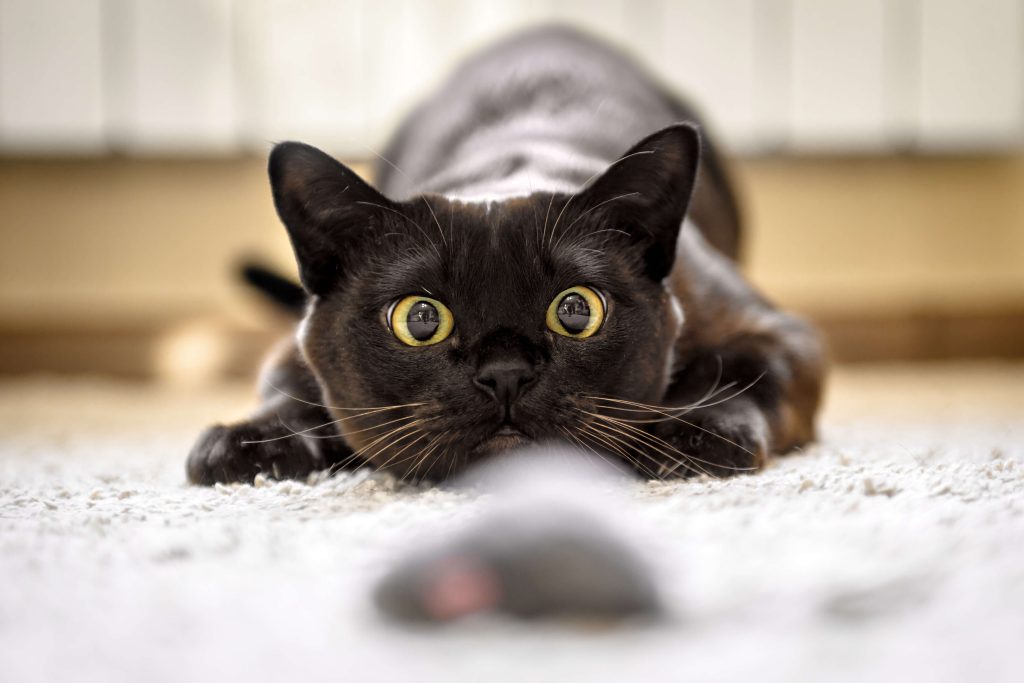
Whiskers as tactile sensors

Whiskers are a cat’s tactile sensors, alongside the receptors. In other words, they’re used to feel the environment around them. Whiskers are surrounded by nerve tracts and are thus very sensitive: cats are able to feel the slightest touch, the slightest vibration. Every stimulus is immediately passed on to the cat’s brain and translated into action. Whiskers provide a 3D view that enables cats to evaluate their environment at lightning speed.
Whiskers reveal you cat’s mood

Do you speak the language of cats? And do you know how to interpret cat behaviour? Do you always know what your cat is trying to tell you? If you know what’s behind their facial expressions and the position of their tails, ears and whiskers (vibrissae), you’ll be able to understand them even better. Indeed, whiskers also reveal things about a cat’s mood.
Interpreting the position of your cat’s whiskers
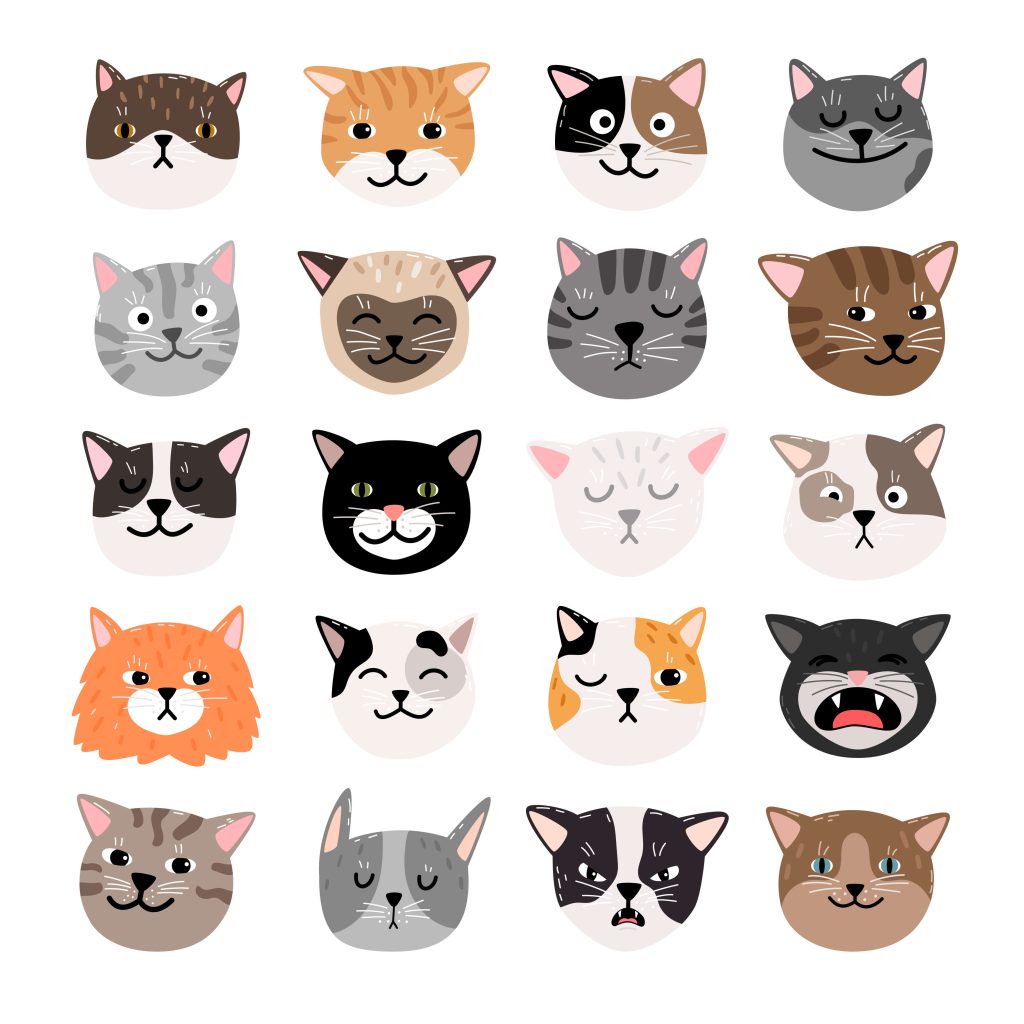
If you know what the position of a cat’s whiskers reveals, then you can better interpret your cat’s body language. Are they completely tense or completely relaxed? Cats’ whiskers allow you to draw conclusions about their state of mind. Especially the very long sinus hairs located on either side if the muzzle are a good indicator of your cat’s mood:
READING WHISKERS:
If the whiskers are spread out and pushed forward: the cat is in an excited and alert standby mode
If the whiskers are not spread out, but instead close to the mouth: the cat is in a relaxed standby mode
Where do cats have whiskers?
Cats have whiskers around their mouth, but also on their nose, cheeks, above their eyes and on their chin. Your cat even has some “vibrissae” on its front paws! These strategic hairs make it possible for cats to do what they do best, namely taking in all forms of sensory stimuli and immediately transmitting that information to their brain.
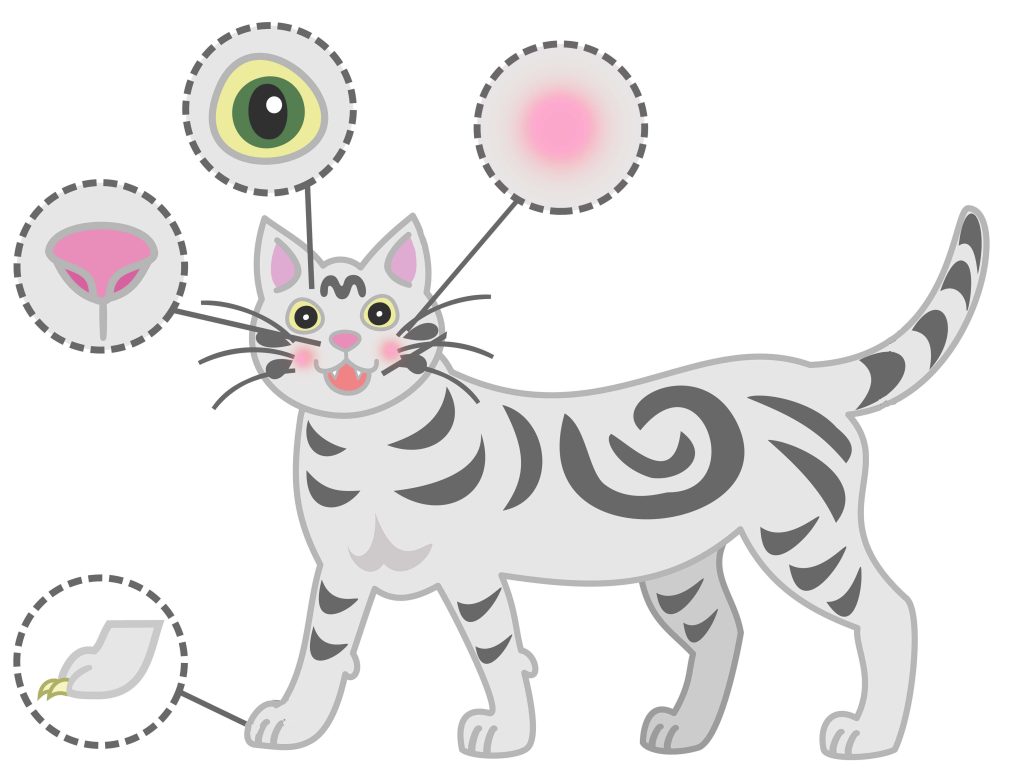
Number of vibrissae* on your cat’s body:
- on both sides of the nose: per side 24-30 = 48-60
- on the cheeks: 2 tufts per side, each with 4-8 vibrissae = 8-16
- above the eyes: per side 5-10 = 10-20
- on the chin or upper and lower lip: 15-24 = 30-48
- on the back of each front paw: 3-6 = 6-12 on each side.
A cat can have a total of 102 to 156 vibrissae.
*Source: © 1999-2022 Welt der Katzen, Marcus Skupin – Katzenforschung | Katzenwissen | Katzenhaltung, „Vibrissen der Katzen“, online at Vibrissen der Katze (welt-der-katzen.de), zugegriffen am 18.07.2022
Whiskers on both sides of the nose
Cats have their longest whiskers on both sides of their nose. These whiskers are neatly arranged in rows of 4 and occasionally 5, one above the other. In total, about twelve whiskers line the cat’s muzzle. The upper and lower rows can move independently of one another; while the lower ones move forward, the lower ones can be directed backwards.
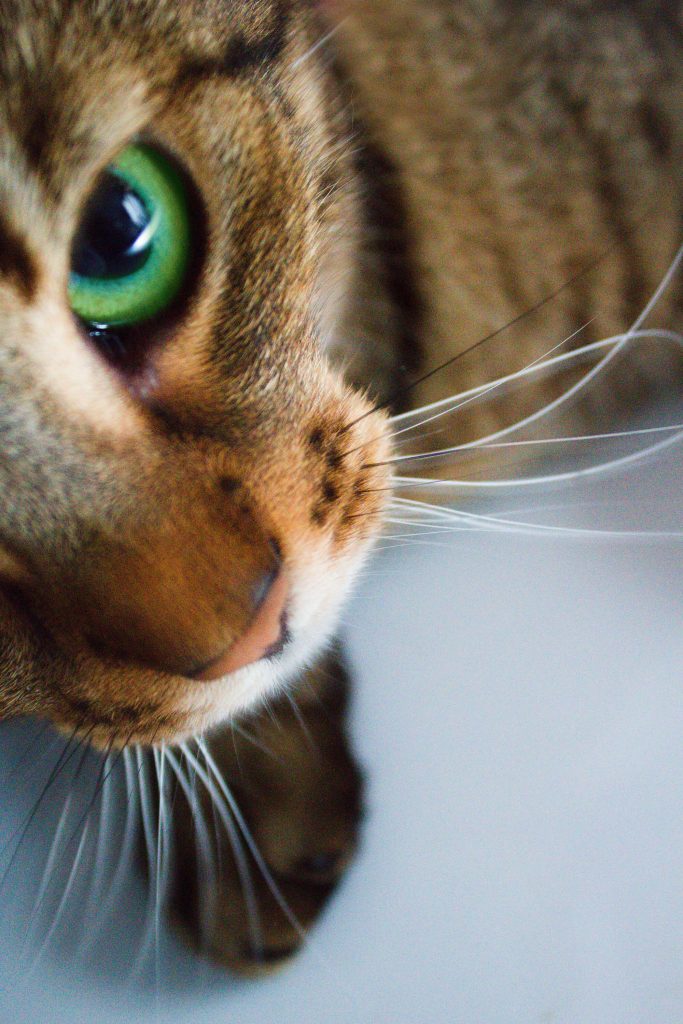
Whiskers on the cheeks
Cats also have whiskers on their cheeks. But these are slightly more delicate and not as long as the vibrissae around the muzzle or above the eyes. These tactile hairs help cats identify possible sources of danger and tell them what local conditions are. For example, “Is this opening big enough for me to fit through?” This is important for cats to know when attempting to catch prey and escape from enemies.
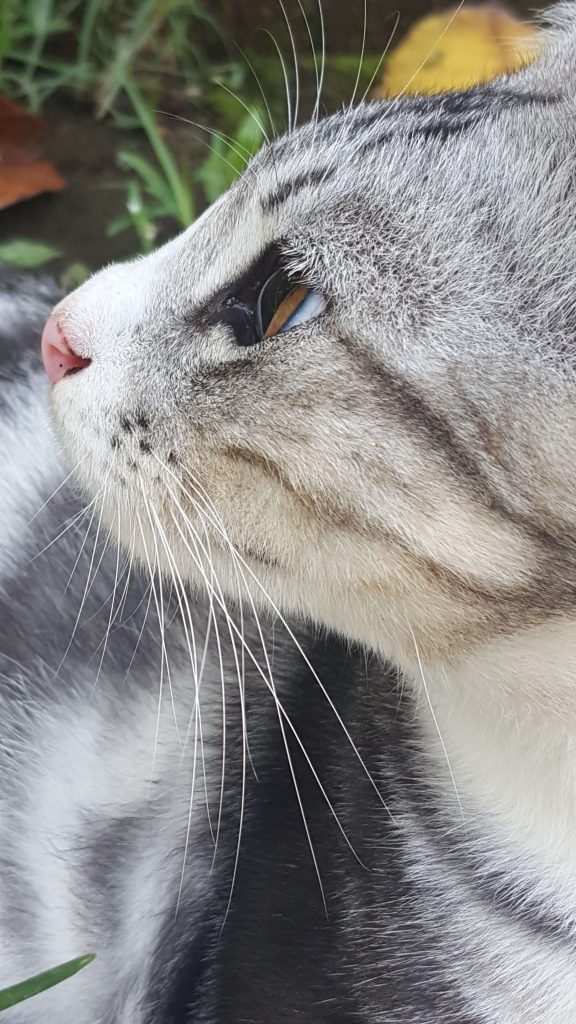
Whiskers over the eyes
Cat eyes are perfectly designed for these hunters on the prowl. In fact, a cat can use its tactile hairs to “see”, even if it were blindfolded! Sinus hairs also serve to protect the cat’s eyes: the whiskers above their eyes are like antennae with a built-in early warning system. They protect the cat’s sensitive visual organs.
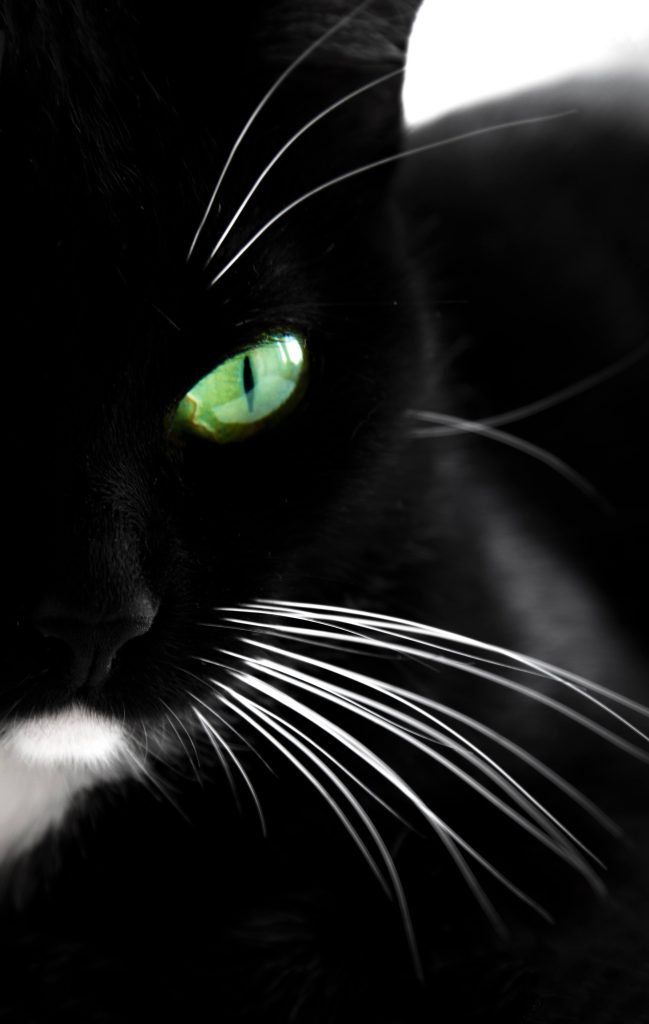
Whiskers on the chin
Cats also have whiskers on the chin. These vibrissae are somewhat shorter than the other sinus hairs on the cat’s head, but they’re just as sensitive and delicate as the longer tracking hairs. Cats can’t see very well directly in front of them, but with the help of these whiskers on their chin, they can sense exactly what’s there, including what it smells like and how active the food (still) is, no matter whether it’s a mouse or snack.
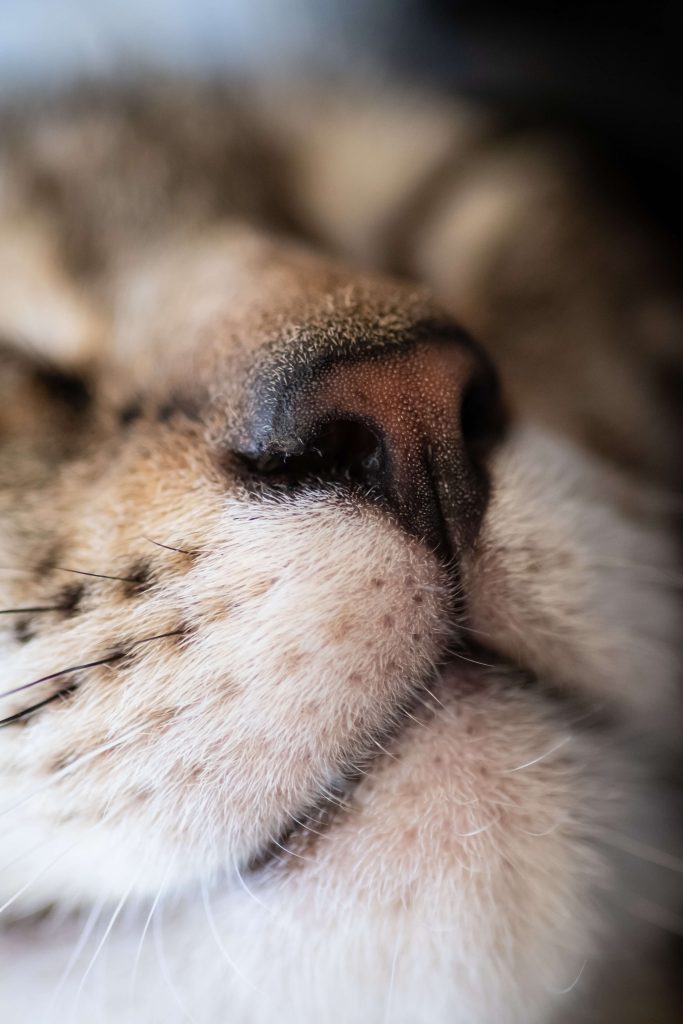
Vibrissae on the back of the front paws
Cats’ paws are one of their most important “tools”. Without paws, your cat wouldn’t be able to catch and hold on to their prey. But it also needs them to climb and jump. The front paws are equipped with vibrissae at the back, that is, at the “wrist”. With these tactile hairs on their paws, these feline hunters are able to sense the position and movement of their prey and strike at the decisive moment.
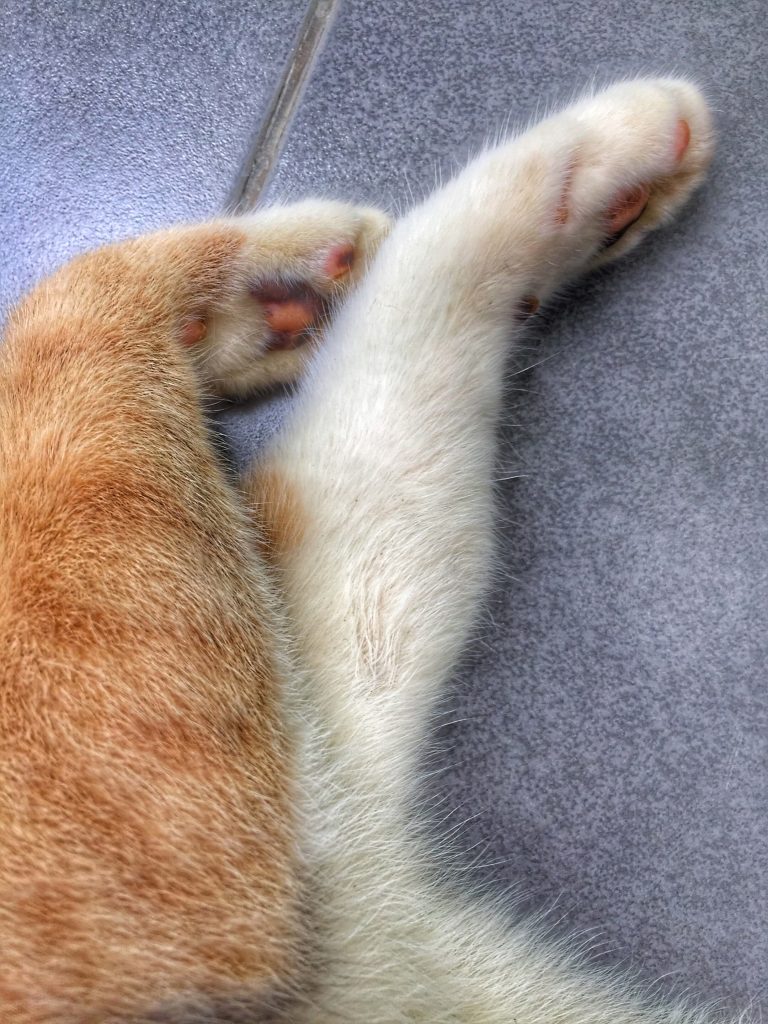
When cats lose their whiskers

A whisker on your couch? If you find a single whisker, there’s no need to worry, it’s totally normal! Even whiskers have a due date; as time passes, they get “worn down” and fall out. In other words, when your cat’s whiskers have aged or become damaged, your cat will likely lose some of those whiskers. But no worries, they’re just making room for new ones, which will grow back where the old ones used to be and continue their work there.
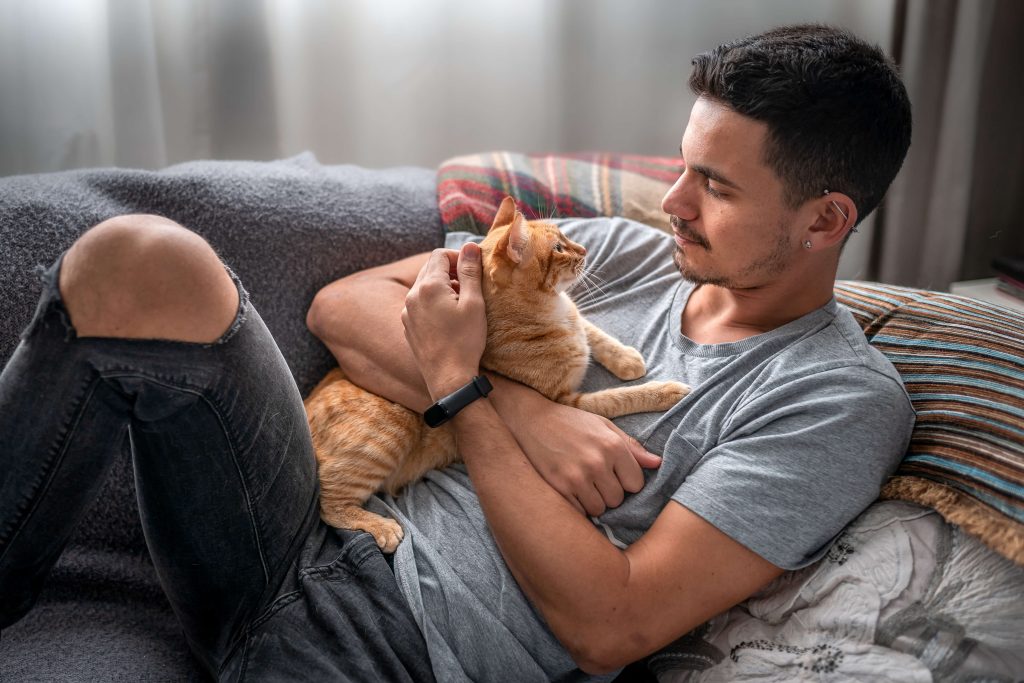
This is why your cat’s whiskers fall out
As the seasons come and go, cats experience changes in their hair and fur. Whiskers, however, are no ordinary hairs, so they don’t shed during your cat’s seasonal coat change. Instead, the growth and development of whiskers is subject to a whole different set of laws. In the embryonic stage, your cat’s whiskers will come into being before their fur. And the whiskers will grow and fall out according to a different life cycle.
How often do whiskers fall out
A cat’s whiskers fall out automatically after a few months. The new sinus hairs then grow in the same hair follicle as the old whiskers. At first, this happens quite rapidly, a few millimetres every day. After a few weeks, they start growing a little slower until their growth is complete. When the new sinus hair is about ½ to ¾ as long as it’s going to get, the old whisker says goodbye and falls out. The new sinus hair them moves into its place.
When do whiskers grow back?
Even before these tactile hairs fall off, care is taken to ensure that successors are ready and waiting. The new hairs are not yet visible, but they’re growing. When do whiskers grow back in cats? Depending on the cat, it can take 1 to 3 months before the new sinus hairs come to the surface. And no worries, even if they’re in the process of being renewed, they still work well.
Should you trim your cat’s whiskers?
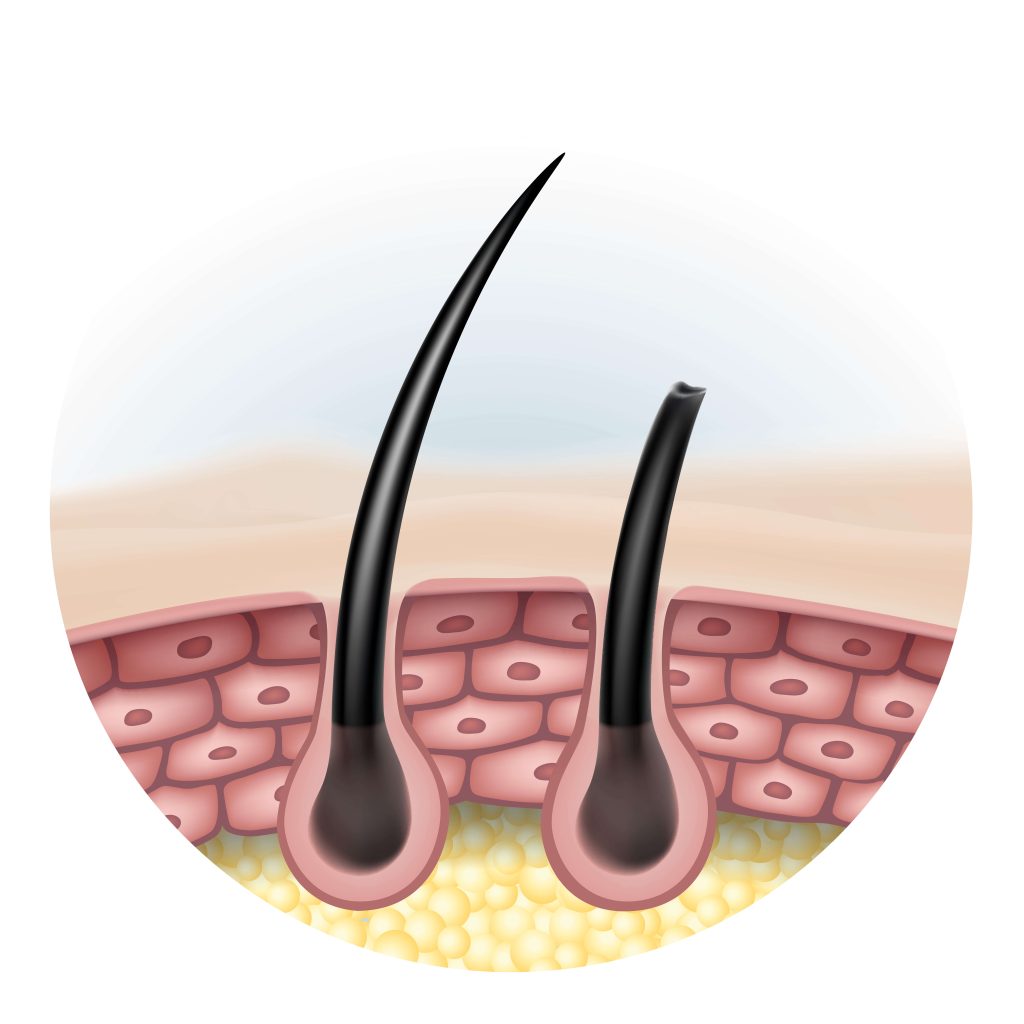
The German word for whiskers is Schnurrhaare, literally “purr hairs”, even though cats don’t use their whiskers to purr. And since cats have many whiskers around the muzzle, they’re also sometimes referred to in German as “beard hairs.” Terms like these might make you think you should be grooming your cat’s whiskers like you would a human beard, for example, by trimming or shaving them off. But nothing could be further from the truth. You should never ever trim your cat’s whiskers!
Here’s why you should never trim your cat’s whiskers
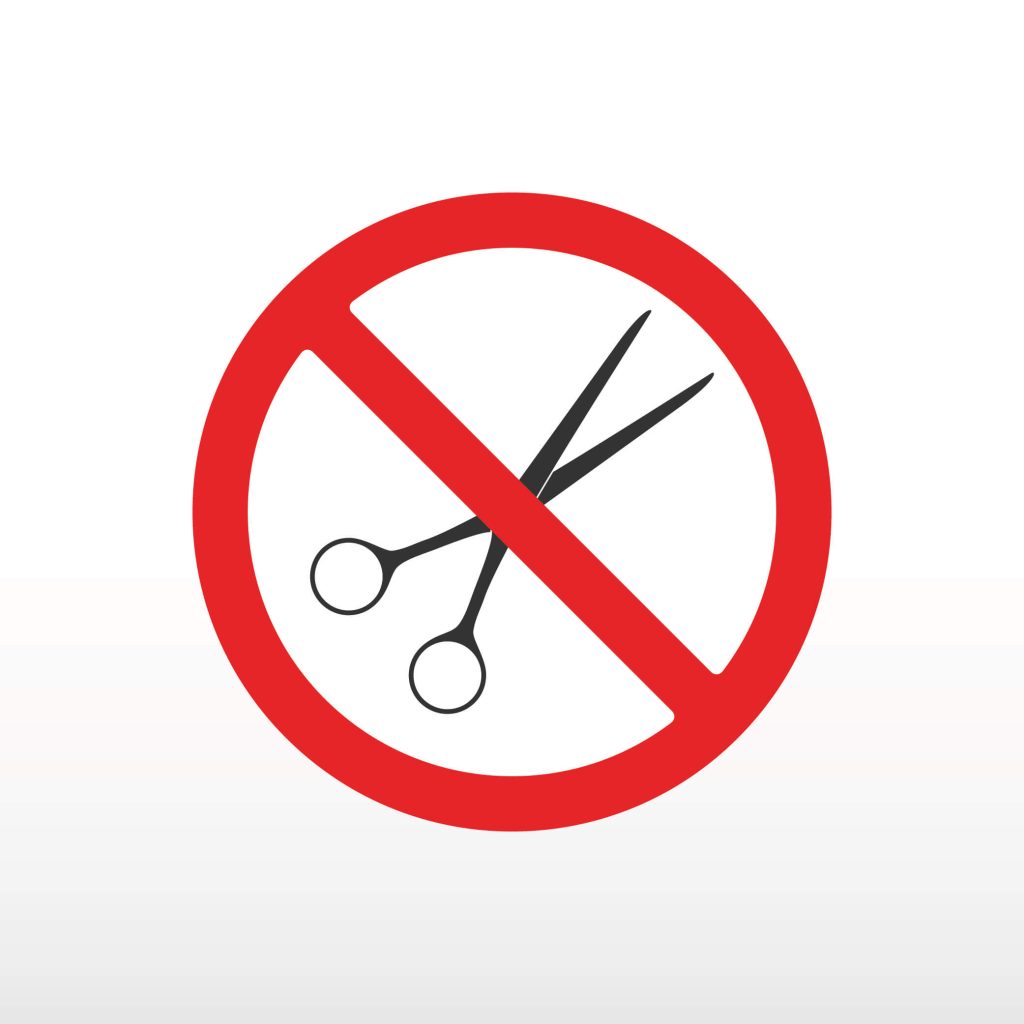
You should never trim your cat’s whiskers because these sinus hairs and hair follicles form part of a highly sensitive tactile organ. If you were to cut these tactile hairs, it would constitute an amputation according to §6 of the German Animal Welfare Act (2020). In other words, the act of cutting a cat’s whiskers is strictly prohibited without a valid indication from a veterinarian! And remember, it’s a violation of §1 of the Animal Welfare Act to inflict bodily harm on animals without reasonable cause.
*Source: 2021 Tierschutzgesetz, “Tierschutzgesetz in der Fassung der Bekanntmachung vom 18. Mai 2006 (BGBl. I S. 1206, 1313), das zuletzt durch Artikel 105 des Gesetzes vom 10. August 2021 (BGBl. I S. 3436) geändert worden ist”“, online at TierSchG – Tierschutzgesetz (gesetze-im-internet.de), seen on 27.07.2022
Are there any cats that don’t have whiskers?
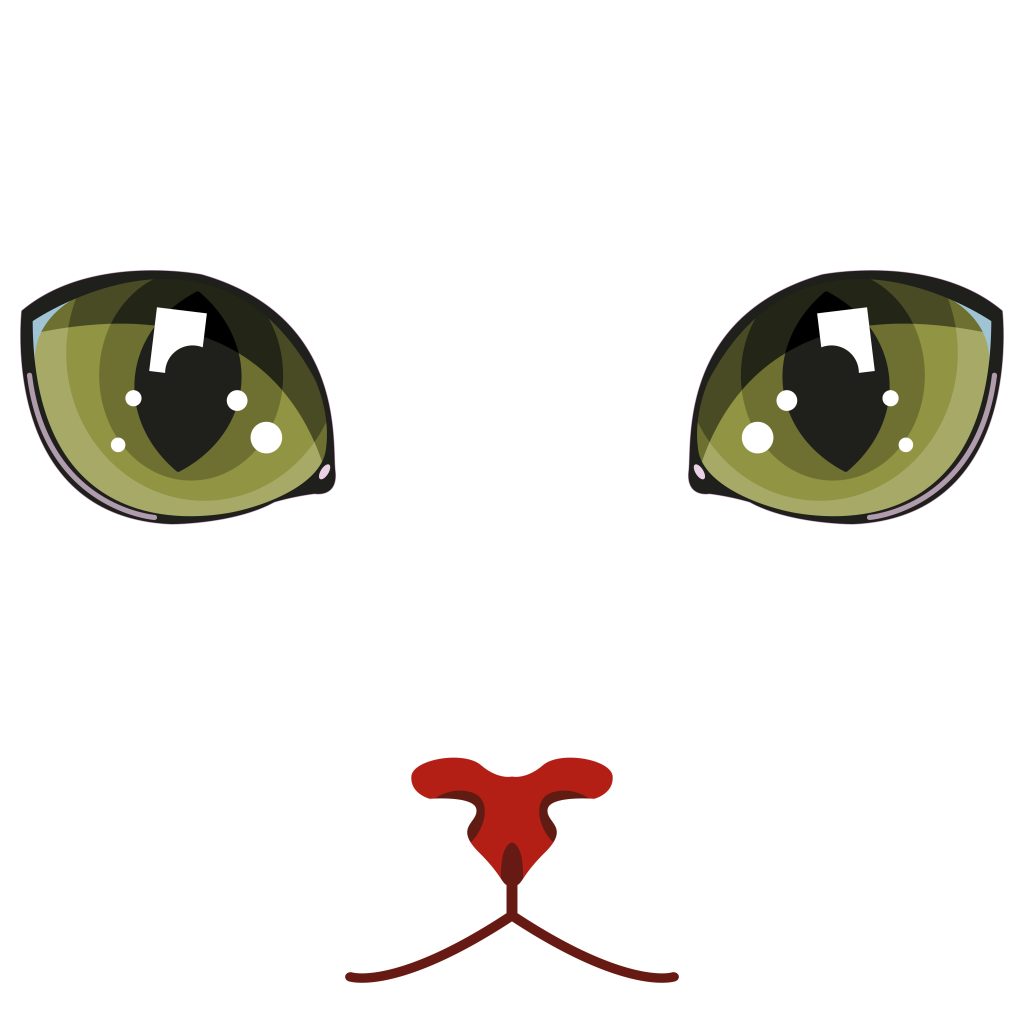
Cats can have different types of whiskers depending on the breed. Many breed standards have straight sinus hairs, while others have wavy or curly sensory hairs, such as the Devon Rex. And there are even some cats that don’t have whiskers. Sensory hairs are not some kind of decoration on a cat’s face, but part of a unique sensory organ. If the sensory hairs are deformed or bred away, it makes it impossible for the cat to transmit stimuli to the brain as it would usually do. The cat’s perception is thus limited.
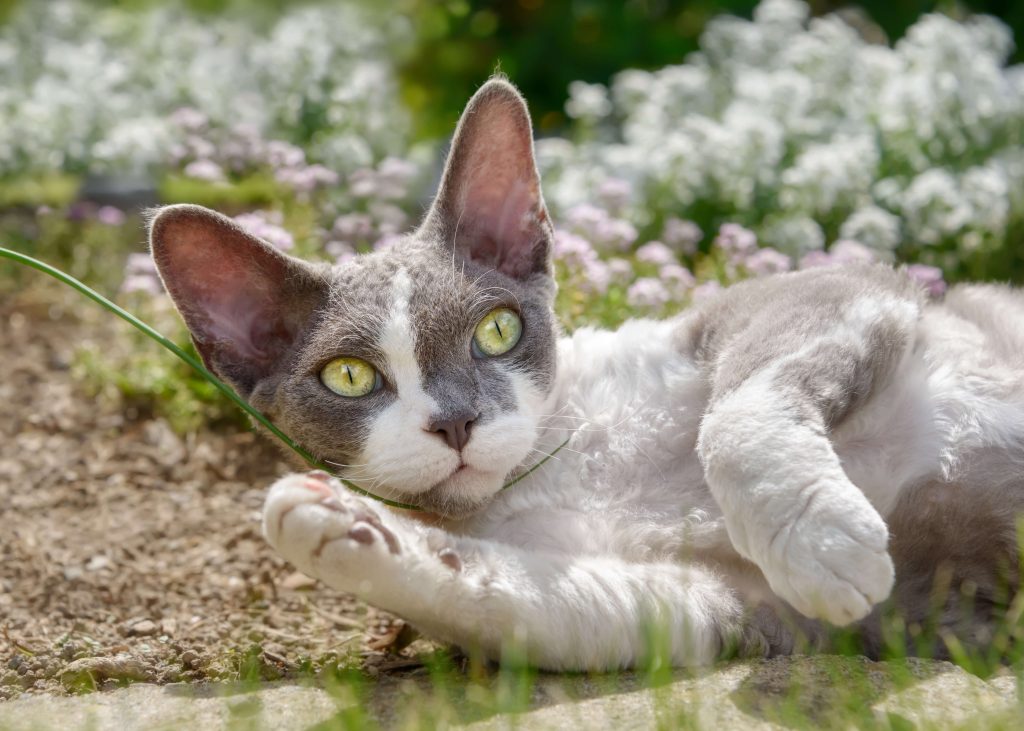
Sphynx Cats
Sphynx cats are referred to as “naked cats”. They have no fur and appear to be completely hairless, with only a light down covering their body. The fact that intact sinus hairs in cats are worth preserving and protecting has been confirmed several times by the courts (VG Berlin*, 2015; VG Hamburg**, 2018). If the tactile hairs are missing in naked cats, as in the Canadian Sphynx, this can lead to a ban on the breeding of the cat.
Sources: *VG Berlin (2015): VG Berlin, Urteil vom 23.09.2015, Az. VG 24 K 202.14., **VG Hamburg (2018): VG Hamburg, 11. Kammer, Urteil vom 04.04.2018, Az. 11 E 1067/18
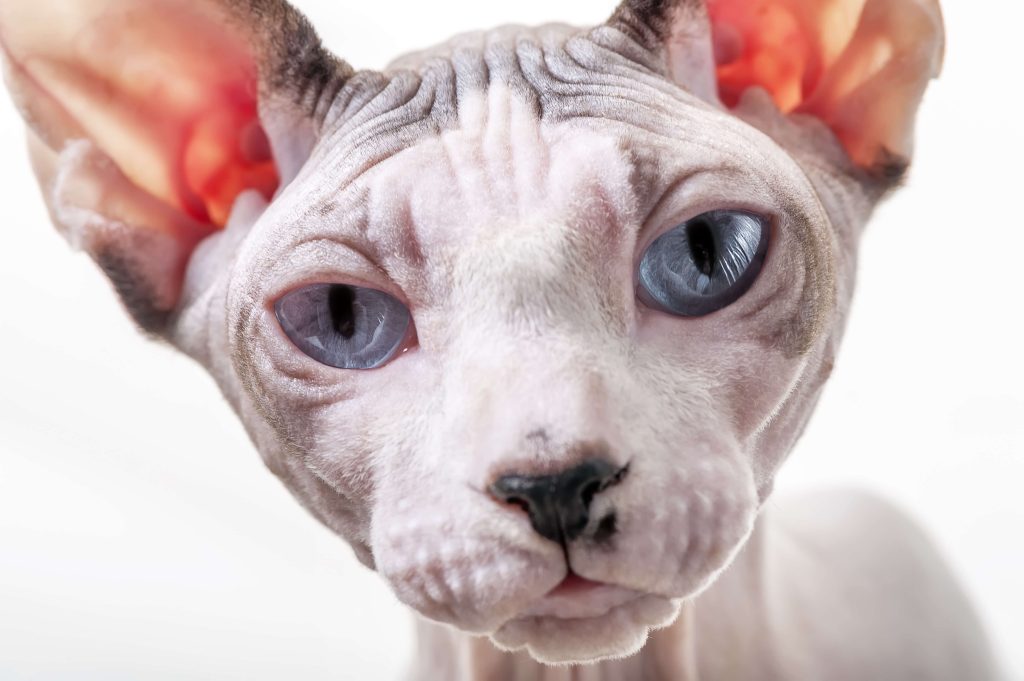
Cats use their whiskers to feel, sense and touch. Whiskers are also called vibrissae, tactile hairs or sinus hairs. They perform vital functions. They serve as a tactile organ, showing the cat the way, protecting its eyes, enhancing its sense of smell, altering facial expressions and thus communicating.
Whiskers are part of a functional tactile organ consisting of a long sinus hair and a hair follicle that is supplied with nerve stimuli. Together they form receptors that respond to the finest touch stimuli. When a stimulus hits the whisker, it is converted into impulses and transmitted to the cat’s brain.
Cats have sensation in their whiskers because the walls of the hair follicles are interwoven with sensitive nerves. Cats therefore react to the touch of their tactile hairs. Even the smallest touch stimulus is immediately amplified by leverage on the surface and in the follicle and therefore immediately perceived by the cat.
A cat’s whiskers are firmly rooted and much deeper and stronger than their “normal”. Cats do not have nerves in the whiskers themselves; instead, the hair follicles in which the whiskers are anchored are criss-crossed by countless nerve tracts. These convert the incoming stimulus into an electrical impulse that the brain can read.
A cat has tactile hairs to orientate itself. It uses them to scans its surroundings and get a very precise picture of what is going on around it. And it’s not only the visuals; indeed, the cat uses its hairs to feel everything that surrounds it, even when it’s pitch black!
The position of your cat’s whiskers allows you to draw conclusions about their state of mind. Especially the very long sinus hairs in the upper part of the muzzle provide a good indication of the cat’s mood, that is, whether she’s in a tense state of expectation or in a relaxed standby mode.
How many whiskers a cat has varies greatly. One cat will have a few more, while the other will have a few less. It depends on the cat. The length, shape and growth rate of the whiskers are also not identical. In general, a cat can have about 102 to 156 whiskers* on its body.
*Source: © 1999-2022 Welt der Katzen, Marcus Skupin – Katzenforschung | Katzenwissen | Katzenhaltung, „Vibrissen der Katzen“, online at Vibrissen der Katze (welt-der-katzen.de), seen on 18.07.2022
Cats have whiskers around their mouth, but also on their nose, cheeks, above their eyes and on their chin. Your cat even has some “vibrissae” on its front paws!
Yes, cats have whiskers on their paws. More precisely, on their front paws. They’re found at the back of the paws near the cat’s “wrists”. Whiskers on the paws are perfect for allowing these nimble hunters to feel the position and movement of their prey and strike at the decisive moment.
Your cat loses its whiskers when “successors” push them out. Indeed, whiskers also get “worn out” at some point and fall out due to age. Your cat will lose whiskers when these “feelers” get old or damaged. But no worries, they’re just making room for new ones. They’ll grow back where the old vibrissae used to be and continue their work there.
New whiskers grow every few months in the same hair follicle as the old whiskers. At first, this happens quite rapidly, but then they grow a little more slowly. When the new sinus hair is about ½ to ¾ as long as planned, the old whisker says goodbye and falls out. The new whisker simply takes its place.
Whiskers can grow back in cats. However, they’re not subject to the cat’s usual seasonal coat change. Even before the sensory hairs go missing, the cat makes sure that new hairs are growing in. But this goes unnoticed at first, because the new hairs are not yet visible. Still, you can be sure they’re in the process of taking shape…
How long does it take for the whiskers to grow back? When will the new whiskers be visible? Sinus hairs grow slowly, only a few millimetres per day. It can therefore take 1 to 3 months until the new whiskers can be seen on the surface. But even when they’re still in the process of growing, they already work very well!
You should never trim the whiskers of a cat! A cat’s whiskers aren’t some kind of decoration. Instead, they’re “sensors” that are vital for the cat. If you shorten the whiskers or cut them off completely, you will be depriving the cat of its sense of perception. Cats cannot completely replace their 6th sense with other senses, and they will lose their ability to sense their surroundings.
Cats can live without whiskers, but they will pay a very high price for it! Whiskers are found in most mammals. We humans (unfortunately) don’t have any. If we had them, we would be able to appreciate just how important a tool they are for sensing our environment. Would we voluntarily part with them? Never! So we should not expect cats to do that either.
The German word for whiskers is Schnurrhaare, literally “purr hairs”, even though cats don’t use their whiskers to purr. Since cats have many whiskers around the muzzle, they’re also sometimes referred to in German as “beard hairs.” Some say the English term “whiskers” is related to the word vibrissae, which comes from the Latin vibrare, which means to vibrate. Others say the English word originated as a description for a bundle of feathers or twigs used for whisking and only then came to denote the projecting hairs of cats and humans. Most of these descriptions are misleading, however. Cat’s don’t use their “whiskers” like a broom nor are whiskers anything like the hairs in a human beard!
